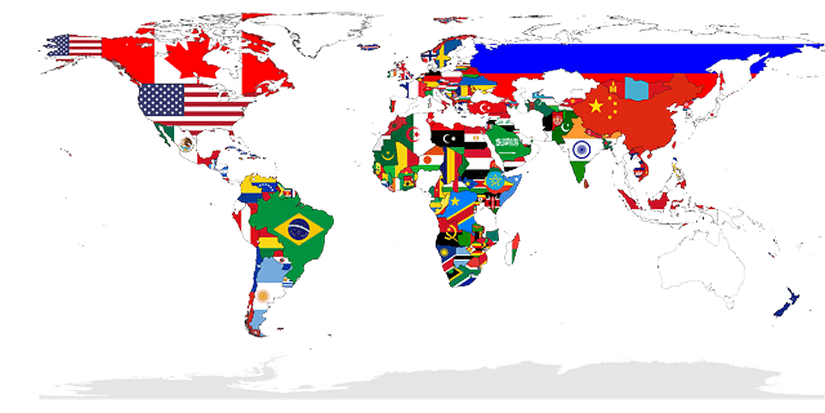By Orbex
Tomorrow the world’s two largest economies report their latest inflation numbers. And this will pretty much affect every market.
China will also release a series of other data points that could be important for its key trade partners. Additionally, it’s interesting to contrast the data from the US and China, as their economic figures appear to be diverging.
China has managed to keep a lid on covid cases, reporting infections only in the hundreds within a population of over a billion. In turn, this allowed China’s economy to remain active throughout most of the world recession.
Nonetheless, there have been increasing costs as progressively more transmissible strains have been detected. In response to the detection of cases, China has shut down major areas to halt the spread. The latest has been the capital of Henan province.
So, how can all this affect inflation data?
Free Reports:
 Download Our Metatrader 4 Indicators – Put Our Free MetaTrader 4 Custom Indicators on your charts when you join our Weekly Newsletter
Download Our Metatrader 4 Indicators – Put Our Free MetaTrader 4 Custom Indicators on your charts when you join our Weekly Newsletter
 Get our Weekly Commitment of Traders Reports - See where the biggest traders (Hedge Funds and Commercial Hedgers) are positioned in the futures markets on a weekly basis.
Get our Weekly Commitment of Traders Reports - See where the biggest traders (Hedge Funds and Commercial Hedgers) are positioned in the futures markets on a weekly basis.
A rebound requires a drop first
While these spot shutdowns have been effective in controlling the virus and minimizing the economic impact, the uncertainty associated with covid has somewhat weighed on the country’s outlook.
Unlike other countries that are or have been experiencing a rebound, China’s economy is supposedly recovered from the initial impact of the virus. As a major exporter, the global supply chain crisis has affected China. This means that even if the economy is fully revived, it can’t grow as fast.
The PBOC has been in an easing cycle while the rest of the world’s central banks look to tighten. The end result is that China is experiencing low inflation while the rest of the world tries to fight high inflation. That could lead to differentials in real yields.
In turn, this may affect the value of different currencies, particularly the dollar, given America’s reliance on Chinese imports.
What to look out for
Analysts anticipate that China will report a monthly December inflation of 0.2%, half of the rate from 0.4% in November. However, PPI (a measure of how much businesses are paying for goods), could show an annual increase of 11.1%, compared to 12.9% prior.
The expectation for China’s M2 money supply is to show an annual increase of 8.7% over the prior year, with New Yuan Loans of CNY1.25T compared to CNY1.27T in November. While China has expanded their monetary base to help support the economy, it’s not on the same scale as in other countries.
There is an increasing consensus that the PBOC will further ease over during the coming month. That’s especially in the wake of tighter financial conditions due to the housing crisis.
Across the Pacific
Meanwhile, in the US, inflation will continue to accelerate, despite the Fed increasing the rate of its taper. The effect of bond purchases on inflation is generally less than the impact of raising rates. As the Fed has vowed to finish its bond-buying before hiking, the inflation rate could still be uncontrollable for a while.
Analysts project the US December CPI change to come in at 7.0%, compared to 6.8% in the prior month. The core rate, excluding food and energy, may show increased acceleration to 5.4%, in comparison to 4.9% in November.
 Article by Orbex
Article by Orbex
Orbex is a fully licensed broker that was established in 2011. Founded with a mission to serve its traders responsibly and provides traders with access to the world’s largest and most liquid financial markets. www.orbex.com

- The US stocks are back to selling off. The US raised tariffs on China to 145% Apr 11, 2025
- EUR/USD Hits Three-Year High as the US Dollar Suffers Heavy Losses Apr 11, 2025
- Markets rallied sharply on the back of a 90-day tariff postponement. China became an exception with tariffs of 125% Apr 10, 2025
- Pound Rallies Sharply Weak Dollar Boosts GBP, but BoE Rate Outlook May Complicate Future Gains Apr 10, 2025
- Tariffs on US imports come into effect today. The RBNZ expectedly lowered the rate by 0.25% Apr 9, 2025
- Volatility in financial markets is insane. Oil fell to $60.7 per barrel Apr 8, 2025
- Japanese Yen Recovers Some Losses as Investors Seek Safe-Haven Assets Apr 8, 2025
- The sell-off in risk assets intensified as tariffs took effect Apr 7, 2025
- COT Metals Charts: Speculator Bets led lower by Gold, Copper & Silver Apr 5, 2025
- COT Bonds Charts: Speculator Bets led by SOFR 1-Month & US Treasury Bonds Apr 5, 2025
